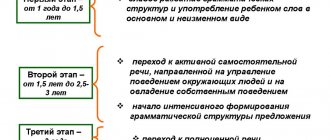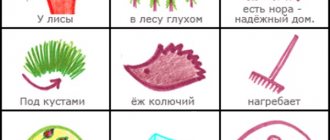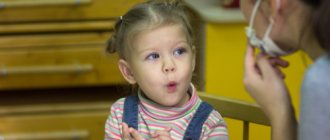The Su-Jok therapy method for the development of children's speech is used in almost all children's institutions. It is actively used in medicine, psychology, and pedagogy. The effectiveness and simplicity of the method are impressive.
What is the secret of the effectiveness of the method, which, if used correctly, will certainly give positive results. I suggest you get to know this therapy in more detail.
The use of Su Jok therapy for the development of children's speech is justified by many years of speech therapy practice. The method can be used both for the correction and prevention of speech disorders. But first, a little history.
The history of the wonderful method
In 1984, South Korean professor Park Jae Woo proposed his original method of healing the body. He called it Su-Jok therapy. "Su" in Korean means hand, and "Jok" means foot. The hand and foot have a unique similarity with the structure of our entire body. Biologically active points on the cyst and foot are located in a strict order, the same in which our organs are located in our body.
It is surprising to see the breadth of indications for this method of influence. From mild ailments to chronic diseases. This method is recommended for the treatment of pain syndromes and even for mood correction.
You might be interested in How to get rid of depression in a short time and start enjoying life again
Su-Jok stimulator-massager is a plastic ball with small spikes and divided into two halves. Inside it are two rings. The rings are made of elastic metal wire and stretch very well. The palms are massaged with a ball, and we massage the fingers with rings. At the same time, a pleasant, tingling sensation is felt throughout the body.
Having determined the zones of correspondence of speech-producing organs and systems, it is possible to influence them in order to prevent and correct speech disorders. Two zones located in the cerebral cortex are responsible for speech. Wernicke's area is responsible for speech perception and Broca's area is responsible for the pronunciation of sounds. According to the Su-Jok theory, the points corresponding to these zones are the upper phalanges of the fingers. Therefore, when massaging Su-Jok with a ball, it is necessary to pay attention to this particular part of the hands. However, taking into account all of the above, it is necessary to stimulate other points of correspondence in order to improve the health of the whole organism.
Article:
Non-traditional methods of influence are becoming a promising means of correctional and developmental work with children with speech disorders.
These methods of therapy are among the effective means of correction, increasingly used in special pedagogy and helping to achieve the maximum possible success in overcoming speech difficulties in preschool children. As you know, massage is a powerful biological stimulant that affects the functions of the skin, the level of supply of oxygen and nutrients to the body, the contractility and performance of the muscles of the massaged hand, as well as the elasticity of joints and ligaments.
Studies by neuropathologists, psychiatrists and physiologists have shown that the morphological and functional formation of the speech areas of the cerebral cortex occurs under the influence of kinesthetic impulses coming from the fingers.
Therefore, Su-Jok therapy can be aimed at influencing areas of the cerebral cortex in order to prevent and correct speech disorders.
In correctional and speech therapy work, Su-Jock therapy techniques can be used as a massage for dysarthric disorders, for the development of fine motor skills of the fingers, as well as for the purpose of general strengthening of the body. Tasks:
- Influence biologically active points according to the Su-Jok system.
- Stimulate the speech areas of the cerebral cortex.
- To increase the level of competence of teachers and parents in the correction of speech disorders in children.
- Normalize muscle tone and stimulate speech areas in the cerebral cortex.
- Use elements of Su-Jok therapy at various stages of work and stages of speech correction classes.
- Help reduce motor and emotional disinhibition, normalize tone.
- Improve spatial orientation skills, develop speech, memory, attention, thinking.
Su-Jok therapy method:
- is based on the fact that each organ of the human body corresponds to bioactive points located on the hands and feet. By influencing these points, you can get rid of many diseases or prevent their development.
- Sujok is a method that has been tested by research and proven to be effective and safe. It is enough to understand it once, then you can use it for the rest of your life.
- This system is so simple and accessible that even a child can master it.
- Translated from Korean, Su means hand, Jok means foot.
With the help of “hedgehog” balls with “spring” rings, children like to massage their fingers and palms, which has a beneficial effect on the entire body, as well as on the development of fine motor skills of the fingers, thereby promoting the development of speech. Especially effective is massage for increased and decreased tone of facial muscles, which is performed in front of a mirror. This massage normalizes muscle tone, mobility and sensitivity. For each child, the ball is strictly individual and must be processed after use, and before the lesson, the children’s hands are washed thoroughly with soap.
These are the exercises that children perform with great desire:
- Rolling the ball in a circle, first on one cheek, then on the other for 10 seconds, first in one direction, then in the other.
- The same actions are performed with puffed out cheeks.
- Roll the ball over relaxed lips in a circle for 10 seconds, first in one direction, then in the other.
- Roll the ball from side to side between the nose and upper lip for 10 seconds.
- Roll the ball under the lower lip from side to side for 10 seconds.
- Rolling the ball on the chin for 10 seconds, first in one direction, then in the other.
Su Jok can be used many times throughout the day, including in any educational activity and various routine moments in preschool settings and at home. In some countries, this method is included in government programs not only for health care, but also for education.
Correctional education involves the development of a range of knowledge and ideas about the environment, the development of vocabulary, sound analysis and synthesis, speech skills and abilities that must be acquired by children at this age stage. Work with speech-language pathologists is aimed at overcoming their speech and psychophysical disorders through individual and subgroup classes. Classes are conducted taking into account a person-centered approach to children suffering from sound pronunciation disorders. At the same time, an integral part of the work is the development of phonemic perception, attention, memory, imaginative thinking in such children...
Using game elements in classes with a child, it is easier to achieve the set goal in correctional work.
Analyzing the results of the work using traditional finger games in parallel with Su-Jok massage, it became obvious that regular use and stimulation of Su-Jok systems has a preventive effect on the speech zones of the cerebral cortex and has a positive effect on correcting the speech of children.
Sources used when working with children:
- 1. Akimenko V. M. New speech therapy technologies: educational manual. – Rostov n/d: Phoenix, 2009.
- 2. Ammosova N. S. Self-massage of hands in preparing children with speech disorders for school: Speech therapist, No. 6, 2004. – P. 78 -82.
- 3. Ivchatova L. A. Su-jok therapy in correctional and pedagogical work with children // Speech therapist - 2010. No. 1. - With. 36-38
- 4. Novikovskaya O. A. Mind at your fingertips: fun finger games / O. A. Novikovskaya - M. AST, 2007 P. 94
- 5. Osmanova G. A. New games with fingers for the development of fine motor skills: Popular speech therapy / Osmanova G. A - KARO, 2008.
- 6. Park Jae Woo Issues of theory and practice of Su Jok therapy: A series of books on Su Jok therapy / Jae Woo Park - Su Jok Academy, 2009.
- 7. Svetlova I. Developing fine motor skills. – M., 2002. – P. 72
- 8. Filicheva T. B., Soboleva A. R. Speech development of a preschooler. – Ekaterinburg: Argo Publishing House, 1996.
- 9. Tsvintarny V.V. We play with our fingers and develop speech. – St. Petersburg. Publishing house "Lan", 2002.
POINTS OF CORRESPONDENCE—The magic mirror of our body
Photo: https://multiurok.ru/
With the help of various tools, the points of correspondence are influenced. This can be a very short-term effect, lasting several minutes, and sometimes even a few seconds, but bringing significant relief to the patient.
How to exercise with a chestnut ball
First of all, Su Jok ball and ring games are used to massage fingers and palms. Undoubtedly, you can use both balls and rings in classes. Sujok procedures will become more attractive and enjoyable for children if finger games are accompanied by interesting rhythmic verses.
Examples of games:
- Ball Kids perform the actions described in the poems.
I roll the ball around in a circle and move it back and forth. I stroke and clean my palms, as if I’m sweeping away crumbs from them.
- Hedgehog First, the baby rolls the ball in his palm, then rolls it along each finger.
The hedgehog was running on his palm, his legs were tired. There are needles on the back, oh so prickly. The hedgehog is very small and showed us his needles. And the needles also look like hedgehogs.
- Magpie A tale about a magpie who cooked porridge. When pronouncing the words of a Russian folk nursery rhyme, we first move them across the palm of our hand. Then we put a ring on each finger, naming the next guest. We roll it to the base and remove it.
- Press the ball on the baby's hand, imitating steps, then make the pressure weaker. Increase the impact again and speed up the pace, then press the ball one by one on your fingers.
The she-bear walked sleepily, and behind her came the little bear. The kids came running and brought books in a basket. They began to open books and write on the leaves.
Working on your speech
Undoubtedly, working with grammatical and lexical categories, phonemic hearing, and sound pronunciation is also possible using balls:
- One is many An adult rolls a ball on the table towards the child, while naming the object in the singular. The patient catches the ball and rolls it back, converting it to the plural.
- Big - small You can build a game in a similar way if you transform words using diminutive - affectionate suffixes. For example, a fox is a fox, a cat is a kitten.
- Syllable structure of a word Simultaneously pronounce the word syllable by syllable and spin the ball in accordance with the rhythmic pattern. One movement per syllable. Or tap a given rhythm with a massager. We thread our fingers into the springs, while observing the rule: as many syllables, as many fingers.
- Phonemic hearing Listening to the words that an adult calls, go through as many sound tracks as there are sounds in the word.
- Fine motor skills Write a letter on paper, then ask the children to roll the ball with their palm or fingers along the outline of the letter.
- Coherent speech You can let yourself play with balls, developing creativity and imagination.
What is the secret of the Su-Jok therapy method for speech development in children?
The Su-Jok therapy method has many advantages, here are some of them:
- High efficiency, proven by many years of practice and numerous positive reviews;
- Absolute safety. The method can be used from an early age until old age;
- Versatility and accessibility. Used in specialized institutions and at home. The cost of one massager ranges from 80 to 200 rubles;
With the help of the Su-Jok therapy method, many correctional problems are solved. Such as:
- Development of phonemic hearing and perception;
- Pronunciation correction (automation and differentiation of sounds);
- Development of sound and syllabic analysis of words;
- Activation of the dictionary and improvement of lexical and grammatical categories;
- Development of general and fine motor skills;
- Development of mental processes;
- Development of color perception;
- Development of space-time concepts;
- Consolidation of accounting transactions.
In correctional and speech therapy work, Su=Jock therapy is used as a massage for dysarthric disorders, to develop fine motor skills of the fingers, and to relieve tension. Also, it allows you to overcome speech negativism when a child communicates with an adult or with other children.
You might be interested in Dysarthria in a child - a complete list of actions for parents
So that the massage process does not seem boring to children, poetic material is used and, at the same time as the massage effect, the sounds being practiced are automated.
How it works?
Of course, knowledge about the importance of acupressure on the functioning of the whole body has been accumulated since ancient times. Human internal organs and systems have a projection on the surface of the skin in the form of special zones or points, especially many of them on the upper and lower extremities. Impact on these zones allows you to activate the work of the corresponding organ, improve its condition and reduce negative manifestations.
A simple and completely harmless system, which was invented by South Korean professor Park Jae-woo. Undoubtedly, it does not have any side effects or complications, therefore the use of this technique in classes gives very good results in children with speech disorders of varying degrees of severity. Not only during the work of a qualified speech therapist - specialist, but also during use by parents at home.
For these purposes, a massager is used in the form of a round box similar to a chestnut. Inside it are two metal springs in the form of a ring, which are put on the fingers and toes. At the same time, pleasant sensations arise, sometimes it tickles, but it doesn’t hurt at all. The surface of the chestnut tree is uneven because it has thorns or pimples. Young patients are better off with the latter, they don’t inject themselves. They can be rolled in your palms, on your cheeks and other parts of the body.
Su-Jok therapy
Using the Su-Jok therapy method for speech development
Preschool age is the very time when speech actively begins to develop. And parents are the main helpers in this. The child hears and learns to pronounce his first words and phrases from his parents. Therefore, the further development of correct speech depends on how much time parents devote to communicating with their child and how correctly they speak to him.
In 1984, South Korean professor Park Jae Woo proposed his original technique, which is aimed at improving the health of the body. It was called Su-Jok therapy. Translated from Korean, “Su” means “brush”, and “Jok” means “foot”. On the hand and foot, biologically active points are located in the same strict order in which our organs are located in the body. This method amazes with its multifunctional effects. It can be used to treat pain syndromes and relax the body.
Su-Jok is a plastic massage ball with small spikes. It is divided into two equal parts. Inside this ball there are two rings. They are made of metal wire that stretches well. The ball is needed to massage the palms, and the rings are needed to massage the fingers. When we do a Su-Jok massage, we feel a slight tingling and relaxation. According to the method of Professor Park Jae Woo, the points that stimulate the speech zones are located at the tips of our fingers. Therefore, you need to stimulate this area more, but do not forget to massage other points to maintain health.
This method has many advantages:
- high efficiency, which has been proven by a huge number of positive reviews;
- safety and possibility of use at any age;
- accessibility – use at home, kindergartens, specialized schools.
Using this method in a speech therapy garden, we develop in pupils phonemic hearing and perception, fine and gross motor skills, spatial-temporal concepts, sound and syllabic analysis of words, correct the pronunciation side of speech, enrich the vocabulary, expand the vocabulary and consolidate counting operations.
In the work of a speech therapist, Su-Jok is used for dysarthria, OHP - levels I, II, III, IV, in children with mental retardation, ADHD, etc. When conducting massage, teachers use the material in poetic form. This solves several problems at once - a massage effect and consolidation of speech material.
Massage with Su-Jok ball
(the child performs the actions according to the text): I roll the ball in my hands: Back and forth, back and forth. I'll roll it over the palm and along the back of it and squeeze it a little in my fist.
Massage with Su-Jok rings
(the child puts a ring on each finger in turn, while pronouncing the words): The fingers went out into the clearing to pick berries. This finger is a mushroom, This finger is a fly agaric, This finger is a strawberry, This finger is just a pine cone.
Application of Su-Jok when automating the sound “R”
in syllables/words (the child sequentially puts a ring on each finger, while clearly pronouncing the syllables or words): Ra - ra - ra Work Ro - ro - ro Mouth Ru - ru - ru Sleeve Ry - ry - ry Fish
Application of Su-Jok in the study of lexical and grammatical constructions
(“One is many”, “Say kindly”, “Antonyms”, “Count”, “Which one?”, etc.). The teacher passes the ball into the hands. The child names the answer and gives the ball back. If the correct answer is given, the teacher takes the ball; if not, then he does not take the ball until the child gives the correct answer.
Game "One - Many"
Goal
: learn to form nouns in singular and plural. For example, toy - toys, book - books, chair - chairs, feather - feathers.
Game “Say Kindly”
Goal
: learn to form words using a diminutive suffix. The teacher names the subject and passes Su-Jok. The child takes it and names the object using a diminutive suffix. For example, a house is a house, a car is a typewriter, a table is a table, a feather is a feather.
Game "Count"
Goal
: learn to coordinate nouns with numerals. The teacher names the object, the child takes the Su-Jok ring, counts the object and puts the ring on each finger in turn. For example, one table - two tables - three tables - four tables - five tables.
Game "Antonyms"
The speech therapist names the item and passes it on to Su-Jok. The child takes it and calls it an antonym. For example, day - night, winter - summer, good - evil, dress - undress.
Game "Which one?"
Goal
: be able to form a sign from an object. The teacher names the subject and passes Su-Jok. The child takes Su-Jok and names the sign. For example, summer is summer, spring is spring, sun is sunny.
Application of Su-Jok for the development of attention and memory
. The teacher gives instructions, and the child follows: take the ball in your right hand, transfer it to your left hand, and then raise both hands up.
Application of Su-Jok in sound analysis of words
(use red, blue and green balls). The teacher says a word or shows a picture of an object. The child lays out a diagram and explains his choice. For example, k is a green ball, i is a red ball, t is a blue ball.
Application of Su-Jok in the development of phonemic hearing
: a) the teacher asks the child, when he hears the sound “A”, to take a ball of the corresponding color and lift it up. The sound “A” is a vowel, it is indicated in red, accordingly you need to raise the red Su-Jok. If the sound is a consonant, you need to raise the blue ball. The teacher names a chain of sounds: B V O S A O A U N A A; b) the teacher invites the child to take the ball in his hands and, when he hears the syllable “PA,” clap his hands together with the ball. The teacher names a chain of syllables: PA NA BA TA PA NA TA BA PA.
Application of Su-Jok in studying and consolidating prepositions
. The teacher places any toy (for example, a bear cub) and asks the child to put the ball behind the bear, in front of the bear, near the bear. Then he asks to talk about what he did with the ball.
Game "Make a sentence"
Several children can participate in this game.
They must come up with as many sentences as possible using Su Jok. For each proposal, the child receives a chip. The one who collects the most chips wins. Elvira Nazimova, teacher-speech therapist
MBDOU D/s No. 101, Ulyanovsk









